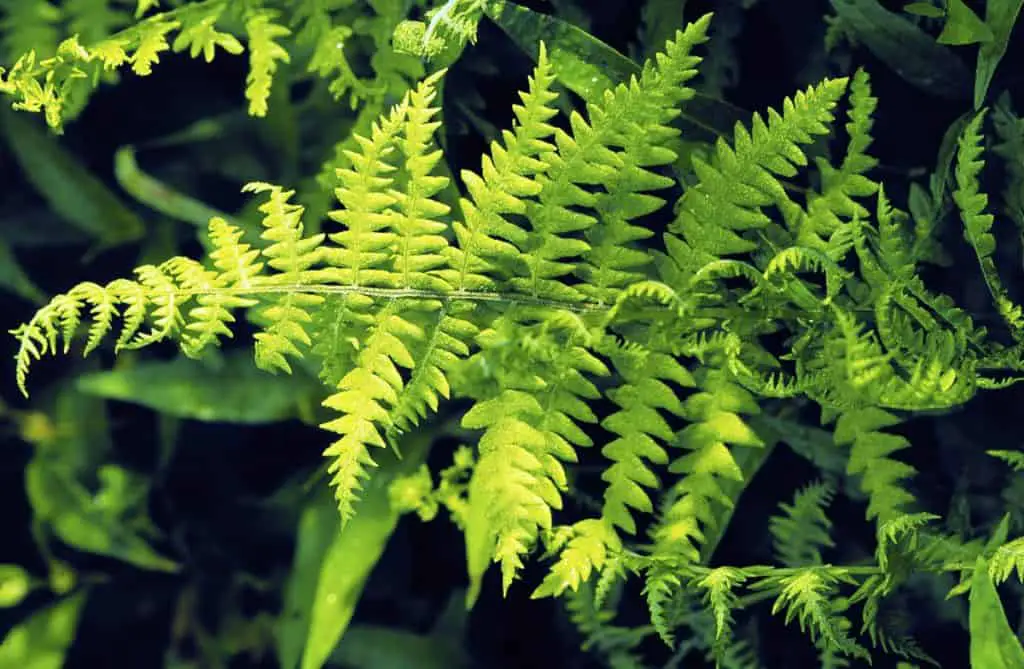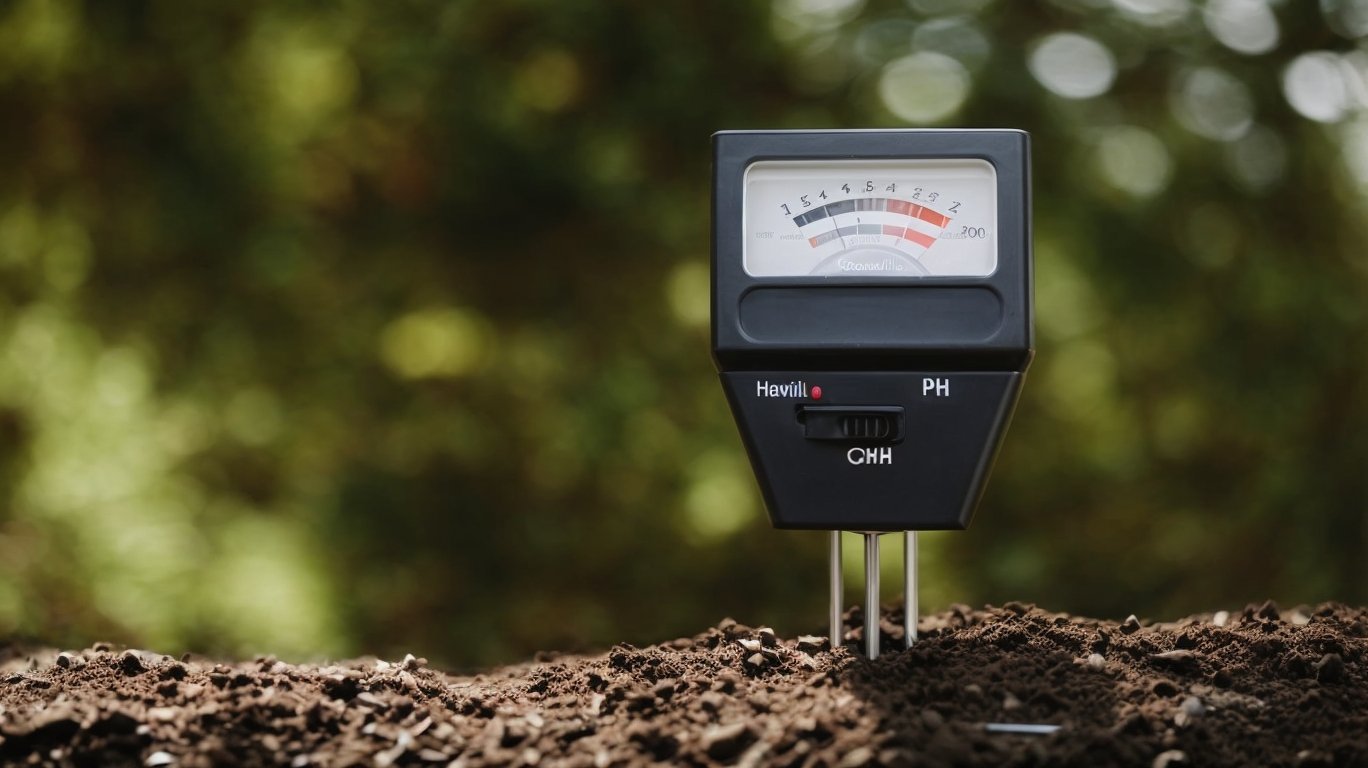Understanding Fern Soil Preferences: A Key to Success
When it comes to fern care, one of the most critical factors to consider is soil pH. Ferns, like many other plants, have unique preferences when it comes to the acidity or alkalinity of their growing medium. While some fern species can tolerate a wide pH range, others are more specific in their requirements. For instance, the maidenhair fern (Adiantum spp.) prefers slightly acidic to neutral soil, with a pH between 6.0 and 7.0. On the other hand, the autumn fern (Dryopteris erythrosora) thrives in more acidic conditions, with a pH between 5.5 and 6.5.
So, do ferns like acidic soil? The answer is not a simple yes or no. While many fern species prefer acidic conditions, others can tolerate or even prefer more alkaline environments. It’s essential to research the specific needs of your fern species to ensure you’re providing the optimal growing conditions. By understanding your fern’s soil preferences, you can create a tailored environment that promotes healthy growth and development.
In general, acidic soil provides several benefits for ferns. The increased availability of nutrients, such as iron and manganese, can enhance root growth and overall plant health. Additionally, acidic soil can help to prevent nutrient deficiencies, which can be detrimental to fern growth. However, it’s crucial to note that extremely acidic conditions can be detrimental to ferns, so it’s essential to strike a balance.
By understanding the importance of soil pH in fern care, you can take the first step towards creating a thriving environment for your plants. Whether you’re a seasoned gardener or just starting out, recognizing the unique needs of your fern species can make all the difference in their health and success.
What is Acidic Soil and How Does it Benefit Ferns?
Acidic soil is a type of soil that has a pH level below 7.0, with a lower pH indicating a more acidic environment. In the context of fern care, acidic soil can be highly beneficial for many species. The increased acidity of the soil allows for better nutrient availability, particularly for micronutrients like iron and manganese. These essential nutrients play a crucial role in promoting healthy root growth, leaf development, and overall plant vigor.
One of the primary advantages of acidic soil for ferns is the improved availability of nutrients. In acidic environments, nutrients like nitrogen, phosphorus, and potassium are more readily available for uptake by the plant. This is especially important for ferns, which often require a balanced diet of nutrients to thrive. Additionally, acidic soil can help to prevent nutrient deficiencies, which can be detrimental to fern growth and development.
Another benefit of acidic soil for ferns is the reduced risk of nutrient toxicity. In alkaline soils, nutrients like iron and manganese can become toxic to ferns, leading to symptoms like leaf scorch and root damage. By maintaining an acidic soil pH, fern growers can minimize the risk of nutrient toxicity and create a more stable growing environment.
So, do ferns like acidic soil? While not all fern species require acidic conditions, many benefit from the increased nutrient availability and improved root growth that acidic soil provides. By understanding the benefits of acidic soil for ferns, growers can create a tailored environment that promotes healthy growth and development.
How to Test Your Soil pH: A Simple Guide
Testing your soil pH is a crucial step in determining whether your ferns are receiving the optimal growing conditions. Fortunately, testing soil pH is a relatively simple process that can be done at home or through a laboratory analysis. Here’s a step-by-step guide on how to test your soil pH:
Method 1: Using a pH Test Kit
pH test kits are widely available at most gardening stores and online. These kits usually include a testing solution and a color chart to help you determine the pH level of your soil. To use a pH test kit, simply follow the instructions provided with the kit. Typically, you’ll need to mix a small sample of soil with the testing solution and compare the resulting color to the color chart.
Method 2: Sending a Sample to a Laboratory
If you want a more accurate reading of your soil pH, you can send a sample to a laboratory for analysis. This method is more expensive than using a pH test kit, but it provides a more detailed analysis of your soil’s pH and nutrient levels. To send a sample to a laboratory, you’ll need to collect a small sample of soil and follow the laboratory’s instructions for packaging and shipping.
Interpreting the Results
Once you’ve received the results of your soil pH test, you can use the following guidelines to interpret the results:
* pH 6.0-7.0: Neutral soil, suitable for most fern species
* pH 5.5-6.0: Slightly acidic soil, suitable for ferns that prefer acidic conditions
* pH 5.0-5.5: Acidic soil, suitable for ferns that thrive in acidic environments
* pH 7.0-8.0: Alkaline soil, may require adjustments for ferns that prefer acidic conditions
By testing your soil pH and adjusting it accordingly, you can create an optimal growing environment for your ferns. Remember, the key to successful fern care is understanding the unique needs of your plants and providing them with the right conditions to thrive.
Choosing the Right Ferns for Acidic Soil: Top Picks
When it comes to growing ferns in acidic soil, choosing the right species is crucial for success. While many ferns can tolerate acidic conditions, some species thrive in these environments. Here are some top picks for ferns that love acidic soil:
1. Autumn Fern (Dryopteris erythrosora)
The Autumn fern is a popular choice for acidic soil, with its vibrant red and orange foliage adding a pop of color to any garden. This species prefers slightly acidic to acidic soil, with a pH between 5.5 and 6.5. It’s also relatively low-maintenance, requiring only occasional watering and fertilization.
2. Lady Fern (Athyrium filix-femina)
The Lady fern is a delicate and elegant species that thrives in acidic soil. It prefers a slightly acidic to neutral soil pH, between 6.0 and 7.0. This fern is also relatively shade-tolerant, making it a great choice for gardens with limited sunlight.
3. Ostrich Fern (Matteuccia struthiopteris)
The Ostrich fern is a striking species with its long, feathery fronds. It prefers acidic soil, with a pH between 5.5 and 6.5. This fern is also relatively fast-growing, making it a great choice for gardens where you want to create a lush, tropical atmosphere.
Other fern species that thrive in acidic soil include the Maidenhair fern (Adiantum spp.), the Cinnamon fern (Osmunda cinnamomea), and the Royal fern (Osmunda regalis). When choosing a fern species for acidic soil, be sure to research its specific needs and preferences to ensure optimal growth and health.
By choosing the right fern species for your acidic soil, you can create a thriving and beautiful garden that will provide years of enjoyment. Remember to also provide the right growing conditions, including adequate moisture, fertilization, and pruning, to ensure your ferns reach their full potential.
Creating an Acidic Soil Mix for Your Ferns: Tips and Tricks
Creating an acidic soil mix for your ferns is a crucial step in providing them with the optimal growing conditions. Acidic soil is essential for many fern species, as it allows for better nutrient availability and improved root growth. Here are some tips and tricks for creating an acidic soil mix for your ferns:
Ingredients:
* Peat moss: A highly acidic ingredient that helps to lower the pH of the soil mix.
* Perlite: A lightweight, porous ingredient that helps to improve drainage and aeration in the soil mix.
* Vermiculite: A mineral ingredient that helps to retain moisture and nutrients in the soil mix.
* Composted pine bark: A acidic ingredient that helps to lower the pH of the soil mix and provide nutrients to the ferns.
Instructions:
1. Mix 2 parts peat moss with 1 part perlite and 1 part vermiculite.
2. Add 1 part composted pine bark to the mix.
3. Mix well to combine all ingredients.
4. Adjust the pH of the mix as needed to achieve the desired level of acidity.
Tips and Tricks:
* Use a high-quality peat moss that is specifically designed for acidic soil mixes.
* Avoid using too much perlite, as it can make the soil mix too dry and prone to washing away.
* Add a small amount of fertilizer to the mix to provide nutrients to the ferns.
* Monitor the pH of the soil mix regularly and adjust as needed to maintain the optimal level of acidity.
By following these tips and tricks, you can create an acidic soil mix that will provide your ferns with the optimal growing conditions. Remember to always monitor the pH of the soil mix and adjust as needed to ensure the health and well-being of your ferns.
Common Mistakes to Avoid When Growing Ferns in Acidic Soil
While growing ferns in acidic soil can be a rewarding experience, there are several common mistakes to avoid in order to ensure optimal growth and health. Here are some of the most common mistakes to watch out for:
Over-Watering
One of the most common mistakes when growing ferns in acidic soil is over-watering. Ferns prefer moist soil, but they can be susceptible to root rot if the soil is too wet. Make sure to check the soil moisture regularly and avoid watering your ferns too frequently.
Under-Fertilizing
Another common mistake is under-fertilizing your ferns. Ferns require regular fertilization to maintain optimal growth and health. Use a balanced fertilizer that is specifically designed for ferns, and follow the instructions on the label for application rates.
Neglecting Repotting
Ferns typically need to be repotted every 1-2 years to maintain optimal growth and health. Neglecting to repot your ferns can lead to a decline in growth and health. Make sure to repot your ferns in the spring or summer when they are actively growing.
Incorrect Soil pH
As mentioned earlier, ferns have specific soil pH requirements. If the soil pH is too high or too low, it can lead to a decline in growth and health. Make sure to test your soil pH regularly and adjust it as needed to maintain optimal growth and health.
Insufficient Light
Ferns require bright, indirect light to photosynthesize and grow. Insufficient light can lead to a decline in growth and health. Make sure to provide your ferns with sufficient light, but avoid direct sunlight which can cause scorching.
By avoiding these common mistakes, you can ensure optimal growth and health for your ferns. Remember to always research the specific needs of your fern species and adjust your care routine accordingly.
Monitoring and Adjusting Your Fern’s Soil pH: Ongoing Care
Once you’ve created an acidic soil environment for your ferns, it’s essential to monitor and adjust the soil pH levels regularly to ensure optimal growth. Here are some tips on how to monitor and adjust your fern’s soil pH:
Monitoring Soil pH
Use a soil pH test kit to monitor the pH levels of your fern’s soil. You can purchase a soil pH test kit at most gardening stores or online. Follow the instructions on the kit to collect a soil sample and determine the pH level.
Adjusting Soil pH
If the soil pH level is too high or too low, you’ll need to adjust it to create an optimal environment for your ferns. Here are some tips on how to adjust soil pH levels:
* To lower the soil pH, add elemental sulfur or aluminum sulfate to the soil. Follow the instructions on the product label for application rates.
* To raise the soil pH, add lime to the soil. Follow the instructions on the product label for application rates.
Frequency of Monitoring and Adjusting
Monitor and adjust the soil pH levels of your ferns regularly, ideally every 1-2 months. This will ensure that the soil pH levels remain optimal for your ferns’ growth and health.
Importance of Ongoing Care
Ongoing care is essential to ensure the optimal growth and health of your ferns. By monitoring and adjusting the soil pH levels regularly, you can create a stable and optimal environment for your ferns to thrive.
By following these tips, you can ensure that your ferns receive the optimal care they need to thrive in an acidic soil environment. Remember to always research the specific needs of your fern species and adjust your care routine accordingly.
Conclusion: Unlocking the Full Potential of Your Ferns
In conclusion, understanding fern soil preferences is crucial for creating an optimal environment for your plants to thrive. By recognizing the importance of acidic soil and its benefits for ferns, you can unlock the full potential of your plants and enjoy their beauty and elegance for years to come.
Remember, different fern species have unique preferences when it comes to soil pH, so it’s essential to research the specific needs of your plants. By creating an acidic soil environment and avoiding common mistakes, you can ensure optimal growth and health for your ferns.
By following the tips and guidelines outlined in this article, you can create a thriving and beautiful fern garden that will provide you with joy and satisfaction for years to come. Whether you’re a seasoned gardener or just starting out, with the right knowledge and care, you can unlock the full potential of your ferns and enjoy their beauty and elegance.
So, do ferns like acidic soil? The answer is a resounding yes By providing your ferns with the right soil conditions, you can unlock their full potential and enjoy their beauty and elegance for years to come.







